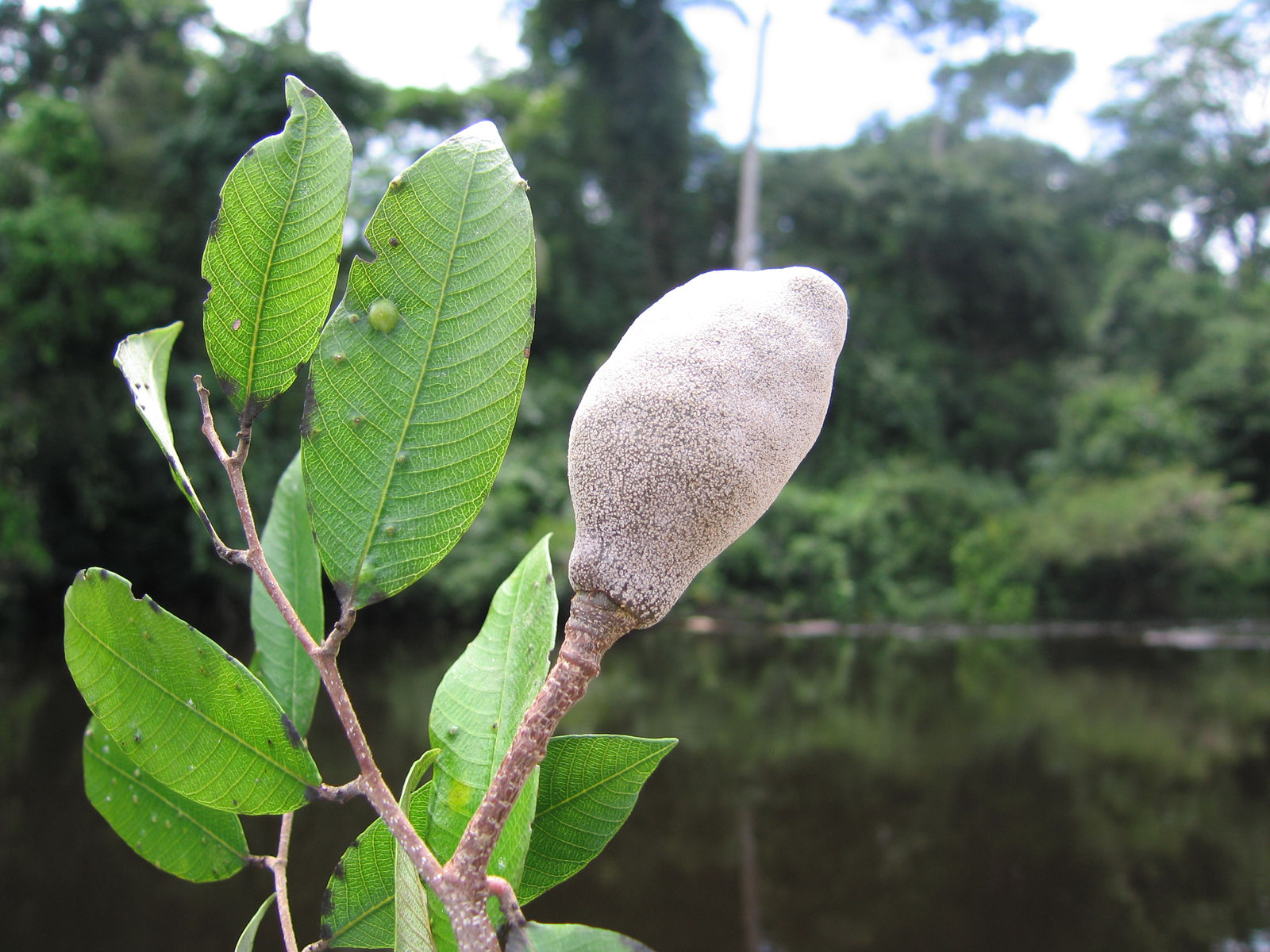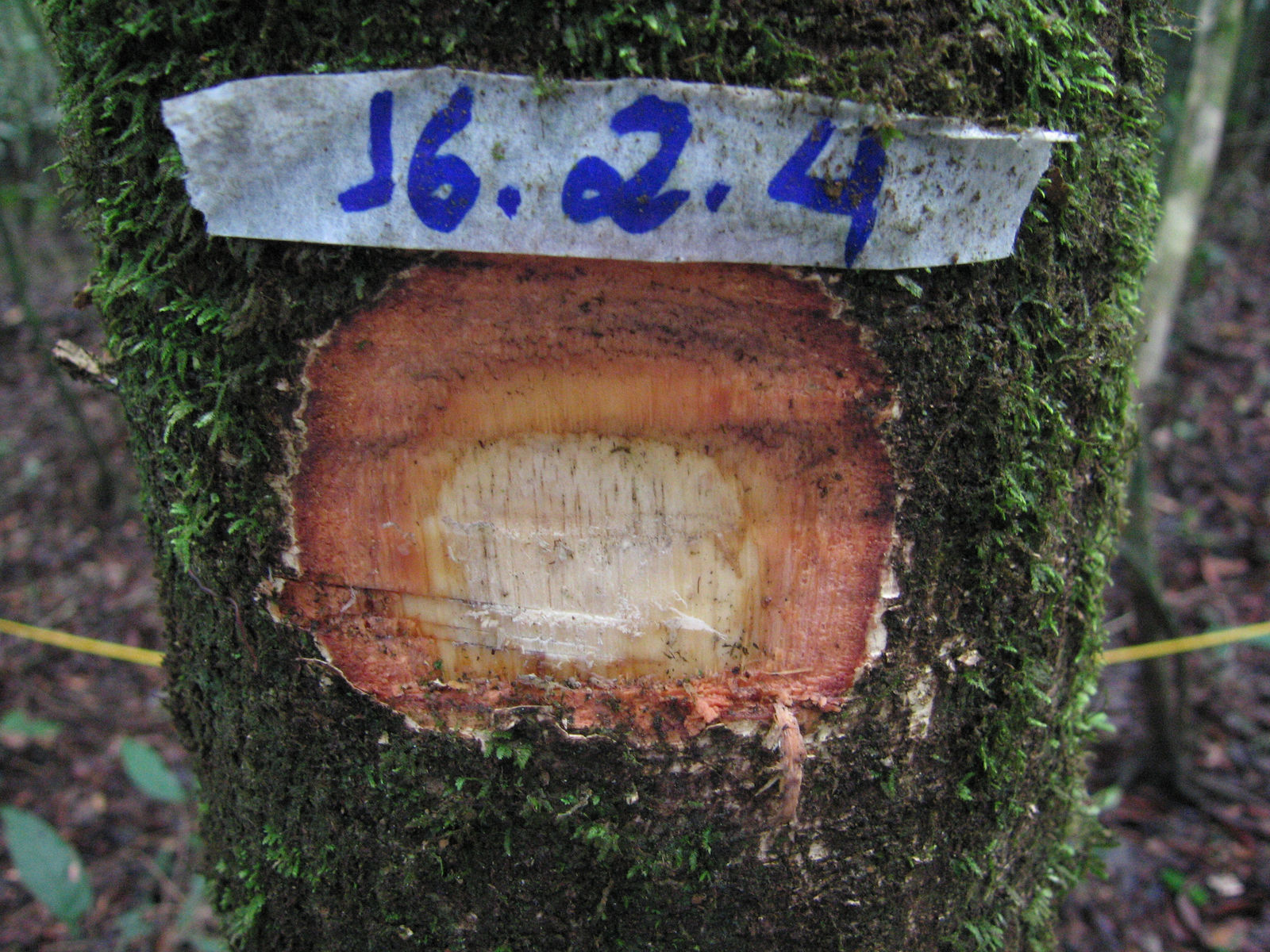Family: Chrysobalanaceae
Author: Sabine
Bibliography: Trans. Hort. Soc. London 5: 451 (1824)
Year: 1824
Status: accepted
Rank: species
Genus: Parinari
Vegetable: False
Observations: Costa Rica to S. Trop. America, Trop. Africa
Description
Guinea-plum, known scientifically as Parinari excelsa, is a remarkable plant that thrives in diverse tropical regions, ranging from Costa Rica and South Tropical America to the vast landscapes of Tropical Africa. This plant is an integral member of the Chrysobalanaceae family, exhibiting unique characteristics that have drawn the attention of botanists and horticulturists alike since its formal documentation in 1824 by Sabine in the Transactions of the Horticultural Society of London.
The Guinea-plum stands out in its natural habitats due to its resilience and adaptability to various tropical climates. The tree produces fruit that is not only notable for its taste but also for its nutritional and commercial value. Indigenous populations and local communities have long relied on the Guinea-plum for sustenance and medicinal purposes, demonstrating its importance in both ecological and cultural contexts.
The Parinari excelsa tree can grow to impressive heights, with its dense canopy providing substantial shade and contributing to the ecosystem by supporting diverse wildlife. Its leaves, flowers, and fruits display unique morphological features that make it an interesting subject for further scientific research and study.
In appearance, the fruit of the Guinea-plum is often round to oval, with a tough, fibrous skin and a sweet, edible pulp inside. The seeds are also of interest due to their potential uses in traditional medicine and possible nutritive value.
In summary, Parinari excelsa, or Guinea-plum, is a plant of significant ecological and cultural importance, flourishing in various tropical regions across the globe and offering numerous benefits through its fruit and other plant parts. Its rich history and broad geographical presence continue to make it a relevant subject in the study of tropical plants within the Chrysobalanaceae family.
Common Names
Eng: guinea-plum
Deu: guineapflaume
Swe: gråplommon
En: Guinea-plum, Grey plum, Guinea plum
Ar: بريناري باسق
Fi: Mobola, Rohtomobola
Fr: Prunier du Guinee
Ff: Kura-mako, Kurahi, Kurananko, Mapatadé
De: Guineapflaume
Pt: Uchirana
Es: Turrú.
Sv: Gråplommon
Wo: Lay, Mampata
Synonyms
- Parinari salicifolia (Engl.)
- Ferolia excelsa ((Sabine) Kuntze)
- Parinari mildbraedii (Engl.)
- Parinari excelsa subsp. holstii ((Engl.) R.A.Graham)
- Parinari verdickii (De Wild.)
- Ferolia amazonica (Kuntze)
- Parinari amazonica (Mart. ex Hook.f.)
- Parinari brachystachya (Benth.)
- Parinari holstii (Engl.)
- Parinari elliottii (Engl.)
- Parinari liberica (Engl. ex Mildbr.)
- Parinari nalaensis (De Wild.)
- Parinari laxiflora (Ducke)
- Parinari laxiflora var. lata (Ducke)
- Parinari excelsa var. fulvescens (Engl.)
- Parinari silvestris (M.Kuhlm.)
- Parinari holstii var. longifolia (Engl. ex De Wild.)
- Parinari tenuifolia (A.Chev.)
- Parinari riparia (R.E.Fr.)
- Parinari whytei (Engl.)
- Parinari glazioviana (Warm.)
Distribution
- Angola (native)
- Bolivia (native)
- Brazil North (native)
- Brazil Northeast (native)
- Brazil South (native)
- Brazil Southeast (native)
- Brazil West-Central (native)
- Burkina (native)
- Burundi (native)
- Cameroon (native)
- Central African Repu (native)
- Colombia (native)
- Congo (native)
- Costa Rica (native)
- French Guiana (native)
- Gabon (native)
- Gambia (native)
- Ghana (native)
- Guinea (native)
- Guinea-Bissau (native)
- Guyana (native)
- Ivory Coast (native)
- Liberia (native)
- Malawi (native)
- Mozambique (native)
- Nigeria (native)
- Peru (native)
- Rwanda (native)
- Senegal (native)
- Sierra Leone (native)
- Sudan (native)
- Suriname (native)
- Tanzania (native)
- Uganda (native)
- Venezuela (native)
- Zambia (native)
- Zaïre (native)
Additional Images

© copyright of the Board of Trustees of the Royal Botanic Gardens, Kew.

© copyright of the Board of Trustees of the Royal Botanic Gardens, Kew.

© copyright of the Board of Trustees of the Royal Botanic Gardens, Kew.
Habit
Taken Jan 1, 2000 by Daniel Barthelemy (cc-by-nc)
Taken Feb 17, 2016 by SINAC Pérez Greivin (cc-by-sa)
Leaf
Taken Mar 28, 2007 by Jean-François Molino (cc-by-sa)
Taken Mar 30, 2007 by Jean-François Molino (cc-by-sa)
Taken Mar 30, 2007 by Jean-François Molino (cc-by-sa)
Taken Feb 17, 2016 by SINAC Pérez Greivin (cc-by-sa)
Taken Feb 17, 2016 by SINAC Pérez Greivin (cc-by-sa)
Fruit
Taken Jul 11, 2012 by Nelson Zamora Villalobos (cc-by-nc)
Taken Feb 17, 2016 by SINAC Pérez Greivin (cc-by-sa)
Flower
Taken Jul 11, 2012 by Nelson Zamora Villalobos (cc-by-nc)
Taken Jul 11, 2012 by Nelson Zamora Villalobos (cc-by-nc)
Taken Jul 11, 2012 by Nelson Zamora Villalobos (cc-by-nc)
Taken Jul 11, 2012 by Nelson Zamora Villalobos (cc-by-nc)
Bark
Taken Mar 8, 2013 by R. Tournebize (cc-by-sa)
Taken Mar 8, 2013 by R. Tournebize (cc-by-sa)
Taken Mar 8, 2013 by R. Tournebize (cc-by-sa)
Taken Mar 8, 2013 by R. Tournebize (cc-by-sa)
Other
Taken Mar 28, 2007 by Jean-François Molino (cc-by-sa)
Taken Mar 30, 2007 by Jean-François Molino (cc-by-sa)
Sources
- WFO (No URL)
- IPNI (No URL)
- GBIF (https://www.gbif.org/species/2985000)
- POWO (http://powo.science.kew.org/taxon/urn:lsid:ipni.org:names:727101-1)
- PlantNet (https://identify.plantnet.org/species/the-plant-list/Parinari excelsa Sabine)



















